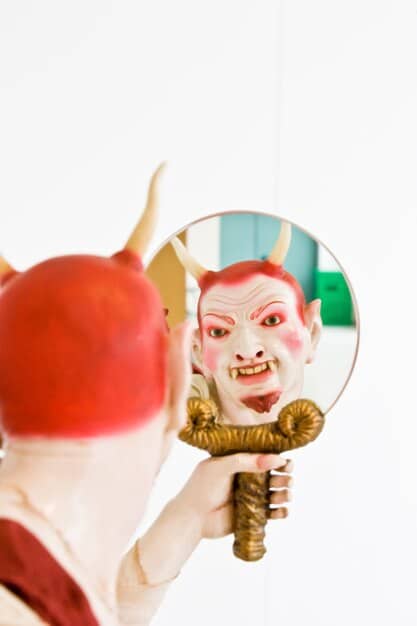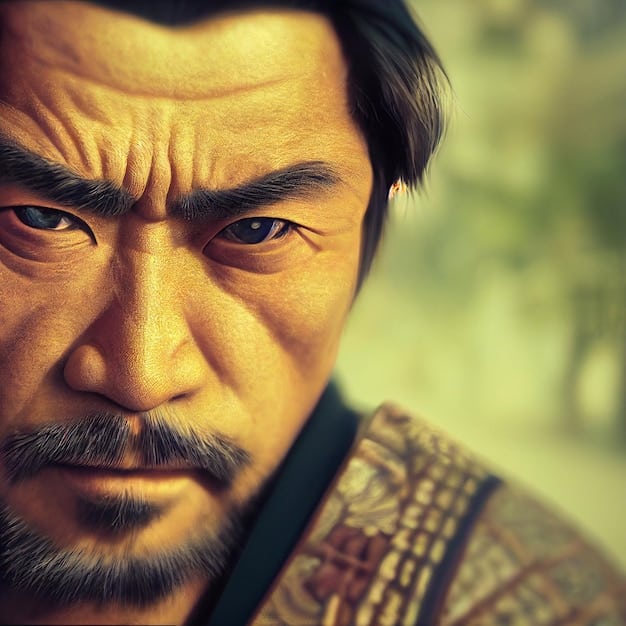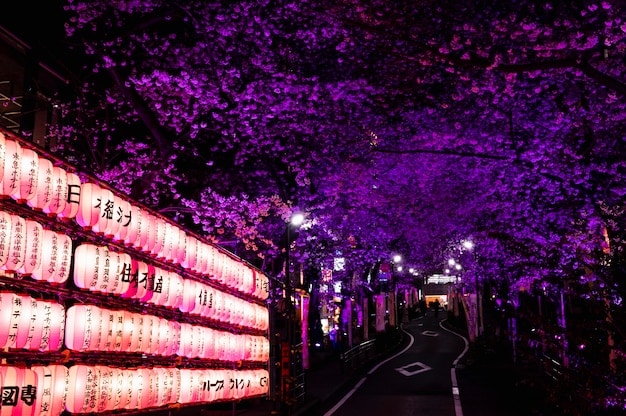Decoding Japanese Drama Endings: Unraveling Mysteries and Fan Theories

Japanese Drama Endings Explained: Unraveling the Mysteries and Fan Theories often leave viewers pondering, ranging from satisfying conclusions to frustrating cliffhangers, sparking numerous fan theories and discussions about their intended meanings.
Have you ever been completely engrossed in a Japanese drama, only to be left scratching your head at the ending? Japanese Drama Endings Explained: Unraveling the Mysteries and Fan Theories can be a complex endeavor, as J-dramas frequently employ ambiguous or open-ended conclusions that invite interpretation.
Understanding Japanese Drama Endings
Japanese dramas, or J-dramas, have captivated audiences worldwide with their compelling storytelling, relatable characters, and exploration of diverse themes. However, one aspect that often sparks intense discussions and debates is their endings. Understanding the nuances of these endings requires a deeper look into Japanese storytelling traditions and the creators’ intentions.
Cultural Influences on J-Drama Endings
Japanese culture places a high value on subtlety, indirectness, and leaving room for interpretation. This philosophy often translates into J-drama endings that aren’t neatly tied up with a bow. Instead, they encourage viewers to reflect on the characters’ journeys and draw their own conclusions.
- Ambiguity as a narrative tool: Many J-dramas use ambiguity as a deliberate choice to provoke thought and discussion.
- Emphasis on emotional resonance: Endings often prioritize emotional impact over concrete resolutions.
- Respect for the viewer’s intelligence: Creators trust the audience to interpret the story’s meaning based on their own experiences and perspectives.
Therefore, when encountering a J-drama ending that feels unresolved, it’s essential to consider the cultural context and the artistic choices made by the creators.

Common Types of J-Drama Endings
While each J-drama is unique, certain ending tropes frequently appear. Recognizing these patterns can help viewers better understand and appreciate the diverse range of concluding styles in J-dramas.
- Open Endings: These endings leave major plot points unresolved, allowing for multiple interpretations of what might happen next.
- Bittersweet Endings: These endings involve both positive and negative outcomes for the characters, reflecting the complexities of life.
- Cyclical Endings: These endings bring the story back to its beginning, suggesting that the characters have learned a lesson or come full circle in their journeys.
By becoming familiar with these common ending types, viewers can approach J-drama finales with a broader understanding and be more receptive to the creators’ artistic intentions.
Ultimately, understanding Japanese drama endings requires considering cultural influences, recognizing common ending types, and embracing the value of ambiguity in Japanese storytelling.
Recurring Themes in J-Drama Finales
Certain themes frequently emerge in J-drama finales, reflecting core values and societal concerns within Japanese culture. Recognizing these recurring themes can provide deeper insights into the messages J-dramas aim to convey through their concluding scenes.
The Importance of Family and Relationships
Family and interpersonal relationships are central to many J-dramas, and their importance is often emphasized in the endings. Final scenes may focus on characters strengthening their bonds, resolving conflicts, or finding solace in their connections with others.
The exploration of these themes often resonates deeply with audiences, as it reflects the significance of social harmony and emotional support within Japanese society.
Sacrifice and Selflessness
The themes of sacrifice and selflessness are also prevalent in J-drama endings. Characters might make difficult choices that benefit others, even at their own expense. These acts of self-sacrifice often serve as a powerful moral message about the importance of altruism and compassion.
Such endings often evoke strong emotional responses from viewers, highlighting the characters’ courage and dedication to the well-being of others.

The Power of Forgiveness
Forgiveness, both of oneself and others, is a significant theme in many J-drama finales. Endings might depict characters overcoming past grievances, offering reconciliation, or learning to accept their own flaws. The message underscores the value of empathy and understanding in fostering healthy relationships and personal growth.
- Letting Go of Resentment: Characters may choose to release feelings of anger and bitterness, paving the way for healing and renewed connections.
- Accepting Imperfection: Individuals may recognize their own shortcomings and grant themselves and others the grace to make mistakes.
- Offering Second Chances: Characters may extend forgiveness to those who have wronged them, providing an opportunity for redemption and repair.
These recurring themes offer a glimpse into the values and cultural nuances that shape J-drama narratives, providing a richer and more meaningful viewing experience.
In conclusion, recurring themes in J-drama finales provide viewers with deeper insights into cultural values and moral messages embedded within the narratives.
Common Fan Theories and Interpretations
The ambiguity of many J-drama endings has fueled countless fan theories and interpretations online. These theories often range from plausible explanations to imaginative scenarios, showcasing the viewers’ investment in the characters and their stories. Exploring these fan theories can be a fun and engaging way to deepen your understanding of J-dramas.
The “Hidden Meaning” Theory
One popular fan theory suggests that many J-drama endings have a hidden meaning that is not immediately apparent. This theory encourages viewers to look beyond the surface and analyze subtle clues, symbols, and character interactions to uncover deeper themes or plot twists.
The “Alternate Timeline” Theory
Another common fan theory proposes that certain J-drama endings take place in an alternate timeline or reality. This theory attempts to explain unresolved plot points or character inconsistencies by suggesting that the story has diverged from its original course.
- Parallel Universes: The idea that the characters exist in multiple versions of reality, each with different outcomes.
- Dream Sequences: The suggestion that the ending is not real but a figment of a character’s imagination.
- Time Travel Paradoxes: The possibility that the ending has been altered by time-traveling events.
The “Unreliable Narrator” Theory
This theory posits that the story in a J-drama is told from the perspective of a character who is biased, delusional, or intentionally misleading the audience. This perspective adds layers of complexity to the ending.
Exploring fan theories and interpretations can enrich your understanding of the intricacies woven into J-drama plots.
Analyzing Specific J-Drama Endings
Let’s dive into analyzing specific J-drama endings to better understand how the aforementioned themes and interpretations play out in practice. By examining concrete examples, we can gain a deeper appreciation for the complexities and nuances of J-drama storytelling.
“Erased” (2016): A bittersweet Reunion
The ending of “Erased” sees Satoru, the protagonist, finally awakening from a coma and reuniting with Kayo, the girl he saved from being murdered in the past. While their reunion is joyful, it is also bittersweet.
This delicate balance creates an ending that is emotionally resonant and thought-provoking.
“Hana Yori Dango” (2005): A Cinderella Story
The ending of “Hana Yori Dango” is a classic example of a romantic resolution. Makino, a working class girl, finally overcomes societal barriers to be with Tsukasa, the wealthy and powerful leader of the F4.
It solidifies its status as a beloved classic.
“Your Lie in April” (2014): A Heartbreaking Farewell
The ending of “Your Lie in April” is a poignant reminder of love and longing and the importance of living life to the fullest.
These analyses of specific J-drama endings demonstrate the rich tapestry of storytelling approaches employed in the genre.
Tips for Interpreting J-Drama Endings
Interpreting J-drama endings can be a stimulating intellectual and emotional exercise. Here are a few tips to enhance your analytical skills and unlock deeper meanings within the narratives:
Pay Attention to Visual Cues
J-dramas skillfully employ visual cues, such as camera angles, colors, and symbolism, to convey subtle messages and foreshadow plot developments. Pay close attention to these visual elements as they can shed light on the creators’ intentions and enrich your understanding of the ending.
Careful observation of visual cues can lead to meaningful interpretations and a deeper connection with the story.
Consider the Characters’ Arcs
Each character in a J-drama undergoes a transformation throughout the storyline. Consider how these arcs inform the ending.
- Assess What They’ve Learned: Each character’s learnings will allow furthered character and plot development.
- Assess How They’ve Changed: Character growth can often shift the story and plotline.
- Assess How Their Relationships Have Evolved: Changes in relationships can change the story’s overall direction.
Read Between the Lines
Subtlety is a hallmark of Japanese storytelling, and J-dramas often rely on implication and nuance rather than explicit exposition. To fully interpret an ending, it’s essential to “read between the lines” and consider what is left unsaid or unshown.
These tips will allow you to unlock hidden layers within a simple viewing.
The Allure of Ambiguous Endings
The trend of ambiguous endings in the J-drama world is both strategic and artistic. Ambiguous storylines offer viewers freedom to interpret outcomes that are most desired.
Freedom to Interpret
Ambiguous endings offer the viewer the chance to determine their favorite ending and allows for further discussion and creative thought.
Continued Support
Continued support for a show is often measured by viewership. Ambiguous endings allows for fans to remain devoted.
Ambiguous endings are a win-win situation for both the developers and the viewers.
| Key Aspect | Brief Description |
|---|---|
| 🎭 Cultural Influences | Japanese culture values subtlety, affecting drama endings. |
| 🤔 Fan Theories | “Hidden Meaning” & “Alternate Timeline” are common. |
| 🔑 Visual Cues | Details in visuals enhance understanding of endings. |
| ❤️ Relationships | Relationships are central themes and explored in finales. |
Frequently Asked Questions
▼
Ambiguity is baked into Japanese storytelling and forces the viewer to reflect on all sides of the story while coming to their own conclusion.
▼
Consider aspects such as symbolism, overall character arcs, and pay close attention to visual and audio cues throughout the program.
▼
J-dramas are known to integrate the importance of family, power of forgiveness, and overall love as key themes in many storylines.
▼
Rather than spoon-feeding the resolution, open endings encourage discussion and keep the J-drama on the viewers minds for an extended period of time.
▼
Fan theories present alternate readings to the show, highlighting alternate solutions to the ending and keeping the fan base engaged.
Conclusion
In conclusion, the art of Japanese Drama Endings Explained: Unraveling the Mysteries and Fan Theories provides viewers with a deeper appreciation for the rich and complex narratives that are used in storytelling processes.

![Unveiling the Layers of [Drama Name]: A Comprehensive Review Unveiling the Layers of [Drama Name]: A Comprehensive Review - Cover Image](https://oramacast.com/wp-content/uploads/2025/07/oramacast.com_5_1752083833_cffa9fe7_cover-360x180.jpg)


![Unveiling the Layers of Emotional Depth and Narrative Impact in [Drama Title] Unveiling the Layers of Emotional Depth and Narrative Impact in [Drama Title] - Cover Image](https://oramacast.com/wp-content/uploads/2025/07/oramacast.com_5_1752083731_0009d956_cover-360x180.jpg)
